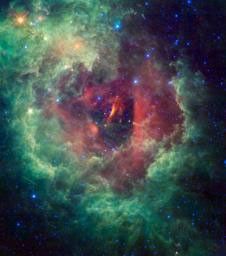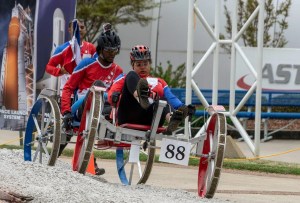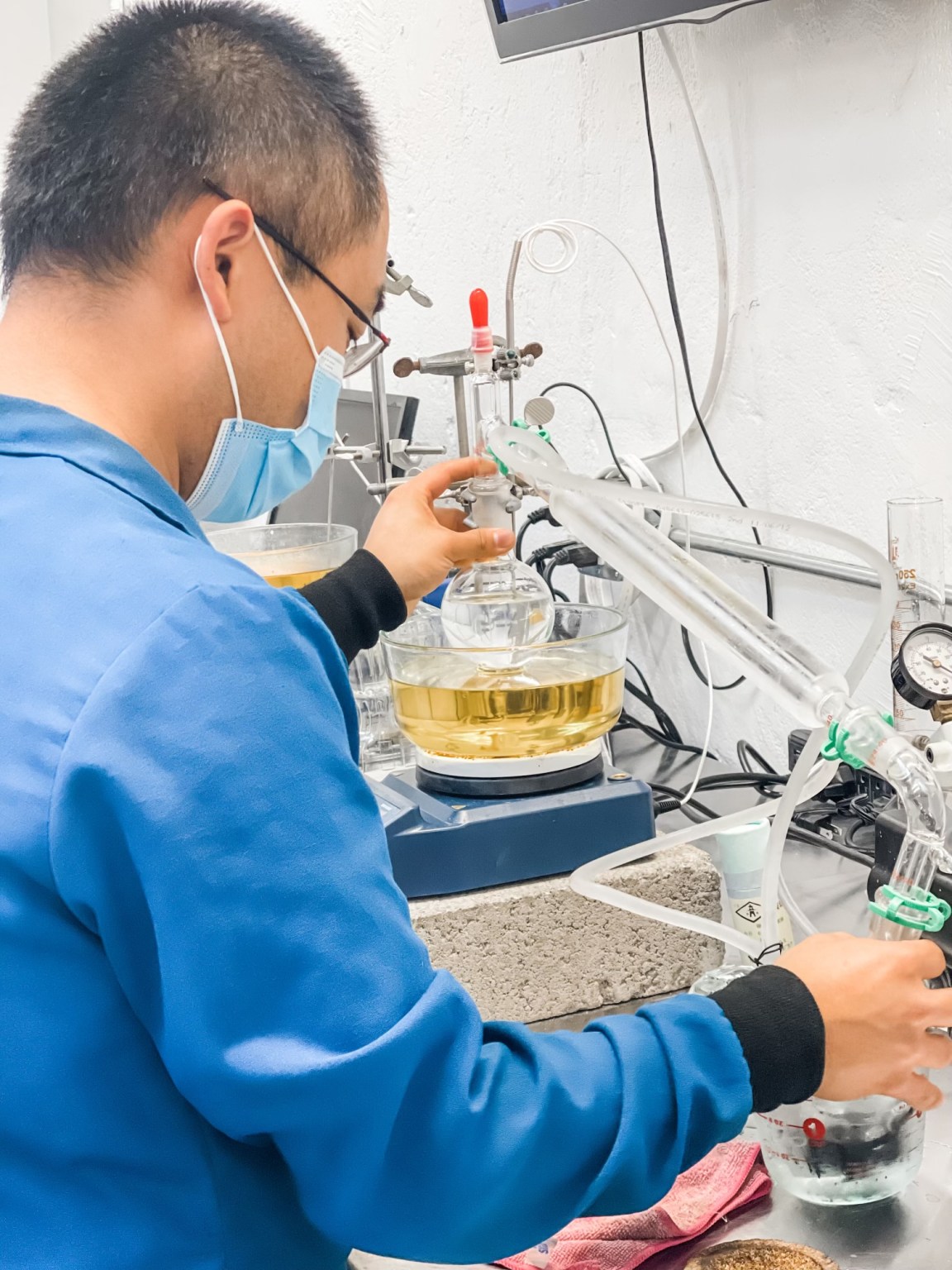
With the successful launch and landing of Artemis I in 2022, NASA set the stage for a new era of space exploration. Together, NASA and its partners will lead humanity to the Moon and prepare for the next giant leap: human exploration of Mars.
To address the multitude of challenges that come with planning for this new era, NASA is calling on individuals and teams from the public to develop new and innovative approaches. Some of the topics addressed through NASA-sponsored contests, challenges, and competitions include waste management and sustainability in space, astronaut health and wellness, and a host of advanced technology needs for long-term space exploration.
Sustainability and Waste Management
A round-trip visit to Mars is estimated to take two to three years. During this adventure, astronauts will need abundant supplies with minimal waste. To be as efficient and self-sufficient as possible, they must recycle, repurpose, or reprocess what they have and make what they need. Thanks to NASA competitions, innovators devised ways to manage ash created from trash in microgravity, reuse materials for growing plants, eject waste from a spacecraft, and recycle orbiting space debris.
With no landfills in space, NASA is developing a reactor that uses thermal processes to turn trash into water, gas, and ash. To manage the ash produced by the reactor, the agency called on the public and awarded three teams a total of $30,000 as part of the Trash-to-Gas Ash Management Challenge. The first-place winner proposed using ultrasonic waves to automate ash removal from the Orbital Syngas Commodity Augmentation Reactor (OSCAR) system, a test rig designed to make use of trash and human waste generated during long-duration spaceflight.

Another way to handle trash in space is to reuse or recycle it. In the Waste to Base Materials Challenge: Sustainable Reprocessing in Space, NASA asked contestants of this competition to submit ideas to convert or repurpose waste into valuable materials like propellant or stock for 3D printing. A winner in the foam packing category proposed a method to recycle packing foam and urine for hydroponics; a winner in the trash category suggested clothing as a growing medium. All teams shared a $24,000 prize.
For the non-recyclable waste made during the journey to and from Mars, NASA sought concepts for a jettison mechanism to eject the material from the spacecraft under the Waste Jettison Mechanism Challenge. If not disposed of, the waste will take up crucial space, pose risks to the spacecraft and crew by creating hazards or contaminants, and decrease fuel efficiency. The agency awarded $30,000 for concepts including a scissor-spring-shot, a secure variable energy launcher, a CO2 trash launcher, and a spring-loaded ejection mechanism.
With more than 17 million pounds of space debris currently in orbit—sections of rockets and non-operational satellites made of aluminum, titanium, steel, plastics, ceramics, and more—the agency is exploring whether recycling the materials is more cost-effective than launching new materials into space. Through the Orbital Alchemy Challenge, NASA awarded $55,000 in prizes for proposals on how to recycle the objects in orbit.
Astronaut Health and Wellness
NASA is making plans to protect astronaut health and performance during long-duration space exploration as well as to develop countermeasures for potential problems during such travel. With goals to establish the first long-term presence on the Moon and send the first astronauts to Mars, NASA requested the public’s help to come up with ways to produce food, preserve the integrity of spacesuits, and monitor an astronaut’s cognitive state.
During extended space missions, astronauts may produce their own safe, nutritious, and appetizing foods. To devise ideas for novel and game-changing food technologies or systems that could feed astronauts during space travel, NASA held the Deep Space Food Challenge, awarding a total of $450,000 to eight winning U.S. teams. Winning technologies included a system and processes for turning air, water, electricity, and yeast into food and a solution that mimics photosynthesis to produce plant- and mushroom-based ingredients.
NASA needs to detect and reduce spacesuit injury risk, but current software solutions are limited. To develop a new solution, NASA conducted the Spacesuit Detection Challenge1 to create software able to detect one or more spacesuits in various environments, discriminate between a person and a spacesuit, and extract suit postures from obscured images. There were five winning programs to label and identify spacesuit motions from video and photos.
As space missions move farther away from Earth, the responsibility for space operations shifts from mission control on the ground to astronaut crews in flight. To gauge astronauts’ ability to remember, make real-time decisions, and think several seconds ahead, NASA’s Cognitive State Determination System contest2 asked participants to develop a biometric sensor suite using various inputs to predict cognitive state. Thirty teams received awards through this contest.
Managing Payloads, Deliveries, and Storage
Aside from managing a sustainable environment and maintaining astronaut health in space, NASA has a host of additional needs to enable future space exploration. Answering NASA’s calls for assistance through various competitions, the public helped devise a plethora of technologies for autonomous observation, nighttime precision landing, docking station flooring, risk prediction using artificial intelligence, advanced scientific sensors, software to analyze images, and programs for modeling shock.
With $2 million in total prizes, the Autonomous Observation Challenge No. 1 of the NASA TechLeap Challenge sought observation technologies to detect, track, and establish line-of-sight communications with a lander, rover, or other objects on the Moon’s surface. One of the winning technologies autonomously detects, tracks, and logs nascent wildfires and similar phenomena. Another winning design uses visible and infrared cameras to identify and classify plumes in Earth’s atmosphere using an advanced form of machine learning.
Even if the terrain is hazardous and lighting conditions are low, NASA needs to be able to land its spacecraft safely. NASA TechLeap’s Nighttime Precision Landing Challenge No. 1 worth up to $650,000 requested sensing systems to detect hazards from an altitude of 250 meters or higher and with the capability to process the data in real-time to generate a terrain map. One winning system leveraged a light projector to project a grid of reflective points visible to a camera, creating an initial geometry map. It then used light detection and ranging with advanced computer vision, machine learning, robotics, and computing to generate a map of the terrain.
A long-duration habitat for use on the Moon, Mars, and during deep space exploration must be capable of attaching to other modules such as pressurized rovers or an airlock. A docking system is needed to join these spacecraft elements even when they are not perfectly aligned, and NASA also needs flexible, strong flooring for use in gravity and microgravity environments. The Spacecraft Docking Adapter with a Flexible but Load-Bearing Floor competition3 awarded five winning designs.
NASA’s Game Changing Development (GCD) program advances space technology ideas that could lead to new approaches for future space missions. Wanting to identify project risks before they become actual issues, GCD held the Risky Space Business: NASA Artificial Intelligence Risk Prediction Challenge to design a project management tool that can extract past project risk information and use artificial intelligence and machine learning to predict risks on future projects. Three winners received a total of $50,000.
NASA’s Entrepreneurs Challenge seeks fresh ideas in technology that could lead to revolutionary science discoveries to explore and understand the solar system and beyond. In 2021, the program’s focus areas included small satellite technologies that can autonomously recognize scientific phenomena in space and respond as needed; sensors to detect and observe at dramatically reduced size, weight, power, and cost; and instruments to detect biomarkers. After a NASA judging panel selected 10 companies to receive a $10,000 award each, the winners refined their concepts, developed white papers, and gave presentations. The same panel selected seven companies to receive an additional $80,000 in prizes.
On a mission to improve understanding of the Moon over many decades—including changes to its surface—NASA held the Image Co-registration Code Challenge4 to devise the initial versions of the Lunar Mission Co-registration Tool. This tool will process lunar images captured under varying lighting conditions or with different spacecraft or camera characteristics and automatically co-register, color balance, and remove distortions. The images are then available to experts for comparison and examination to identify differences over the decades.
To reduce the risk of critical spacecraft component failure due to shock, NASA models the propagation of shock as closely as possible. While the agency created standards in the early days of spaceflight based on extensive testing across structures, today’s mathematical methods and high-performance computing tools can provide better models. The Aftershock: NASA Shock Propagation Prediction Challenge awarded four contestants a shared prize of $50,000, including a deep learning model that predicts shock response spectrum values connected to different frequencies and learns different connections and contexts between the input data points.
Endnotes
[1] https://www.topcoder.com/blog/nasa-spacesuit-detection-challenge/
[2] https://www.topcoder.com/community/nasa/cognitive-state
[4] https://www.topcoder.com/challenges/76c6fb0e-0de3-4d60-b472-37e238e14fc4


































